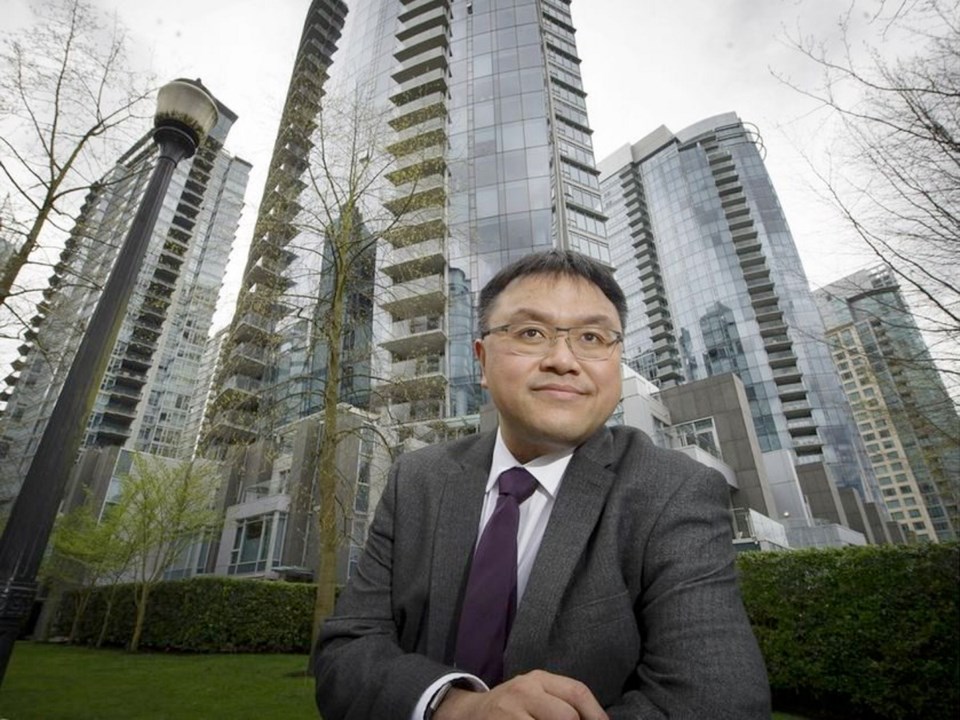Vancouver and its surrounding region of shiny condo towers and affluent, resort-like amenities also has some of the highest levels of poverty and inequality in the country.
Vancouver outstripped the 10 most-populous “census metropolitan areas” in Canada for having the highest percentage (16.5) of residents living in low-incomes households, according to analysis by Andy Yan, director of Simon Fraser University’s City Program.
Yan looked at 2016 census information and compared so-called after-tax, “low-income measures”, which are based on median incomes and gauge relative inequality. For example, the threshold for a two-person household to be designated as an after-tax, low-income-measure household, is having income that is below $31,301.
In comparison, Toronto had the second-highest percentage of residents living in low-income households (15.6 per cent), followed by Montreal (15.3), Winnipeg (15) and Hamilton (13).
The study was released following recent discussion in the Lower Mainland about the under-reporting of income for tax avoidance. There are areas in north-west Richmond that are sharp anomalies, with very low-income levels despite high home values.
But, Yan emphasizes, the study also highlighting pockets of low-income populations throughout Metro Vancouver and, increasingly, the suburbs, where there are higher levels of poverty compared to the rest of Canada.
Others who have looked into the census data agree that both dynamics are at play.
“There are big questions in Vancouver in the real estate market and, it’s very clear, wealth plays an important role,” says Vancouver-based data analyst Jens von Bergmann.
“Typically, it is about unreported income from overseas. It’s a big issue and really hard to nail down. There are large patterns that are consistent with that narrative, but there are lots of variables too.”
“We don’t know, are these people in fairly rich neighbourhoods, but living in a basement suite and getting a deal from their landlord? Or, there are seniors who live in these areas who have paid off their mortgage and might be living on (RRSP) income. We want to be definite, but we can’t be.”
Yan broke out other measures of low income for seniors, working age adults and children, as well as gender. He says his findings have implications as the province and federal government consider their roles in addressing affordability.
For example, says Yan, “What is the state of seniors and where are they concentrated? If you take a look at Chinatown and Gastown and the Downtown Eastside, where 71 per cent of seniors are living in low-income categories, you can ask, ‘How does this inform the fight for 105 Keefer,’” referring to the contentious rezoning application for a Chinatown site this past summer. The desire to build a 12-storey condo drew fiery opposition from advocates for seniors housing and was eventually rejected. There is currently a revised application filed at City Hall that doesn’t require rezoning and doesn’t include social housing units.
Yan said that, considering his information, we can ask, “What is reasonable to build? More generally, how do we deploy services or build infrastructure or plan for transit? It’s critical to understand where low-income people live … so we can understand if jobs are inaccessible. That kind of dynamic can lead to the crystallizing of poverty.”
Details in Yan’s study about low-income pockets in Surrey and Coquitlam fit with other research about poverty moving into suburban communities, said Penny Gurstein, a professor at the University of B.C.’s School of Community and Regional Planning who specializes in socio-cultural aspects of affordable housing, especially for marginalized groups.
“Everything is much more expensive, but incomes have not risen,” says Gurstein. “All of these things are contributing to more pronounced poverty and inequality. There is this assumption that poverty is concentrated in one area or certain areas, (but) it’s actually very dispersed. This puts pressure on communities not used to dealing with these kinds of issues.”
Yan asks: “Are these the beginnings of the bifurcation in Vancouver between the rich and poor? And how it’s on its way to being an exception in the world of real estate appreciation, but not an exception when it comes to levels of income equality in other cities in the world?
“This city has always been expensive, but the absurdities of the mismatch are growing.”



